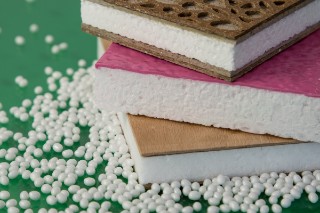In collaboration with project partners, the Fraunhofer WKI will be presenting heatable, recyclable and optionally illuminable lightweight-construction materials on the joint stand “Schaufenster Bioökonomie” (Bioeconomy Showcase) hosted by Project Management Jülich (PtJ) and the Fachagentur Nachwachsende Rohstoffe e. V. (FNR). On the joint stand, research results will be presented from current bioeconomy projects funded by the German Federal Ministry of Food and Agriculture (BMEL) and the German Federal Ministry of Education and Research (BMBF). In the future, this innovative material could be utilized not only in vehicles but also in tiny houses, for example.
more infoPress | Media
-
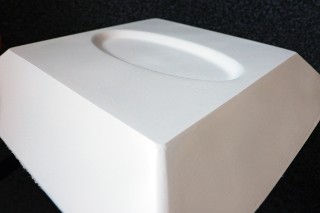
Researchers at the Fraunhofer WKI have developed a bio-based, three-dimensional sandwich structure specifically for lightweight-construction applications in the mobility sector, which is suitable for incorporation into the shell of a caravan. The scientists increased the proportion of renewable raw materials and, at the same time, avoided the utilization of dissimilar materials in order to improve recyclability within the closed loop. The sandwich component can be seen on the Fraunhofer joint stand at the Hannover Messe from 31st March to 4th April 2025.
more info -
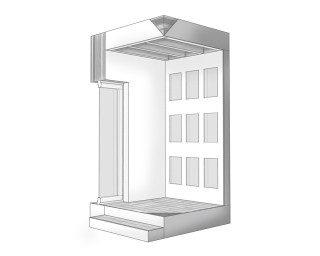
At BAU 2025 in Munich, researchers from the Fraunhofer WKI will be presenting a building construction made from high-quality pine wood components, a wooden beam comprised of reclaimed waste wood, and with insulation materials made from renewable raw materials as well as insulation materials featuring fungal mycelium as an innovative binding agent. With this model, the researchers are demonstrating resource-conserving innovations for building using recycled materials such as waste wood or hemp hurds.
more info -
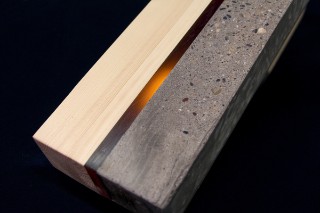
Building with wood provides an important contribution towards climate protection. By combining wood and concrete, the Fraunhofer WKI is significantly expanding the range of applications for timber constructions. By means of a novel bonding technology, an accelerated production of wood-concrete composite elements (WCC elements) has been made possible. The aim is to establish construction with WCC elements in multi-story buildings as a competitive alternative to pure precast reinforced concrete components.
more info -
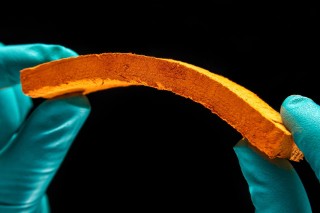
At BAU 2025 in Munich, researchers from the Fraunhofer WKI will be presenting a project in which innovative aerogels are being developed from waste wood. These sustainable materials are being utilized by the researchers to develop, amongst other things, pollutant-adsorbing air filters and recyclable insulation materials.
more info -
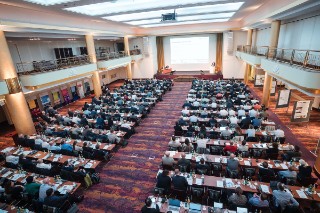
The European Wood-based Panel Symposium took place in Hamburg from October 9 to 11, 2024, with around 375 guests from 31 countries taking part and making the event a great success. The Fraunhofer WKI and the European Panel Federation (EPF) organized the networking event for the 13th time in cooperation with the International Association for Technical Issues Related to Wood (Internationaler Verein für Technische Holzfragen e. V. iVTH) and Hywax GmbH.
more info -

Andreas Göbert, Professor Philipp Eversmann and Professor Dr Julian Lienhard from the University of Kassel have been awarded the Wilhelm Klauditz Prize 2024 for their work “3DWoodWind Research Prototype - Modular Building System made of Wound Hollow Profiles”. The prize is awarded by the International Association for Technical Issues Related to Wood (Internationaler Verein für Technische Holzfragen e. V. iVTH) is awarding the prize for the 12th time.
more info -
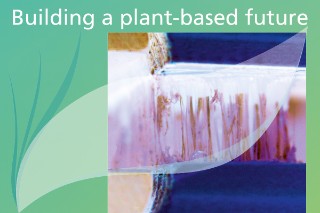
Researchers at the Fraunhofer WKI are developing bio-based adhesives on the basis of renewable raw materials and biogenic residues. Adhesives, with their versatile range of application possibilities, are a key technology in the joining of materials and, consequently, the conservation of finite resources. As a result of their broad spectrum of applications, adhesives are a growth market. The substitution of conventional adhesives with bio-based adhesives provides an important contribution towards the realization of a bio-based circular economy.
more info -

In collaboration with industrial partners, scientists at the Fraunhofer WKI have developed concepts for the material utilization of humins. Humins are dark, highly viscous compounds. They accrue as a by-product during the production of polyethylene furanoate (PEF), a new bio-based substitute for the bulk plastic polyethylene terephthalate (PET). As a result of their complex chemical structure, humins are suitable for a wide range of applications, for example as binders. According to calculations, tens of thousands of tons of humins will accrue every year in the medium to long term, for which no applications currently exist.
more info -
Researchers at the Fraunhofer WKI develop test procedure for the uniform evaluation of air purifiers
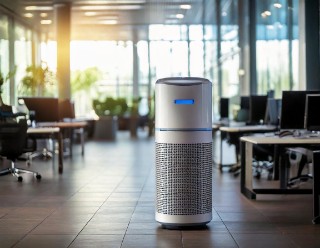
The corona pandemic has shown just how important it is to protect people in indoor areas against infection through airborne pathogens. Mobile air purifiers can, in principle, contribute to this. Until now, there has been no uniform method for testing their effectiveness. Researchers at the Fraunhofer WKI have therefore developed a standardised testing method to close this gap.
more info
 Fraunhofer Institute for Wood Research
Fraunhofer Institute for Wood Research 